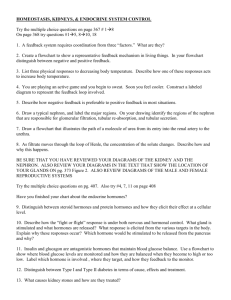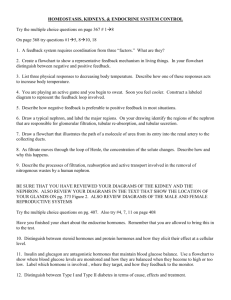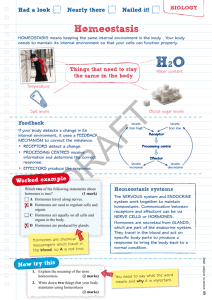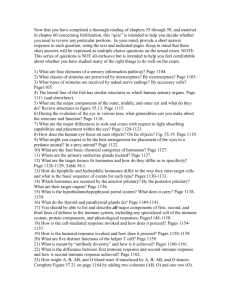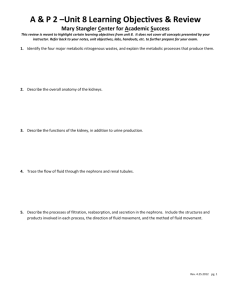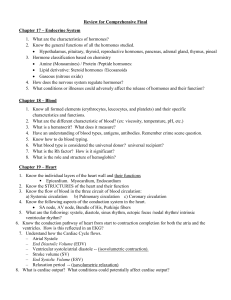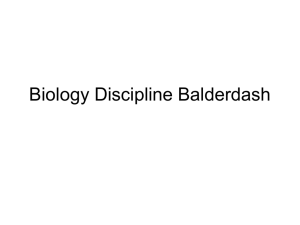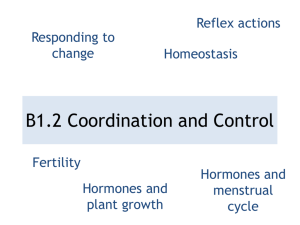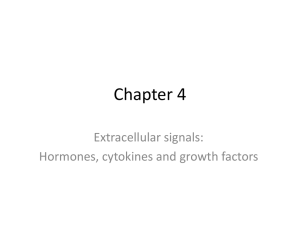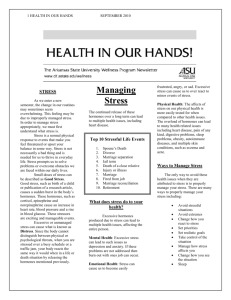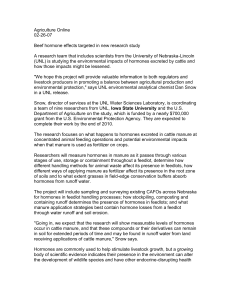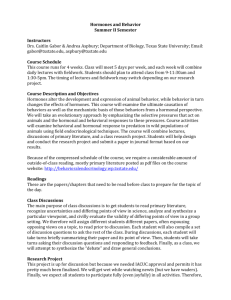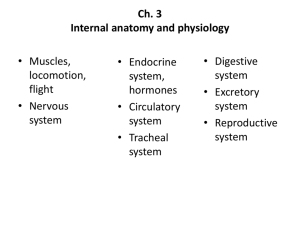SBI 4UI Review for Homeostasis (Learning Goals) Learning Goal R
advertisement
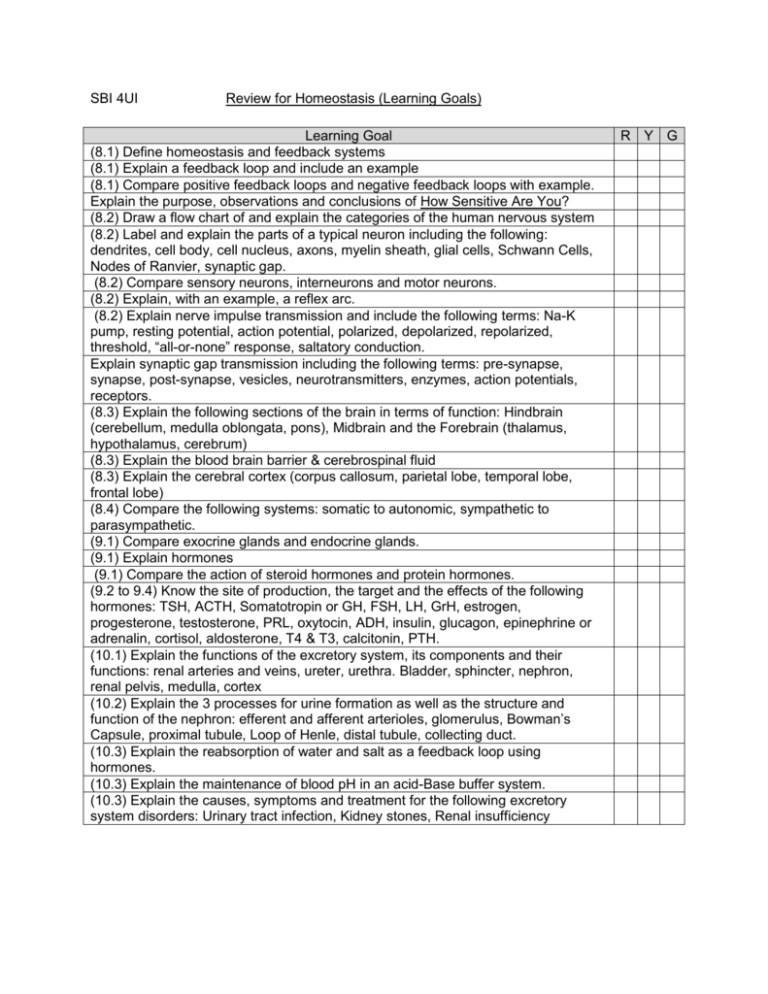
SBI 4UI Review for Homeostasis (Learning Goals) Learning Goal (8.1) Define homeostasis and feedback systems (8.1) Explain a feedback loop and include an example (8.1) Compare positive feedback loops and negative feedback loops with example. Explain the purpose, observations and conclusions of How Sensitive Are You? (8.2) Draw a flow chart of and explain the categories of the human nervous system (8.2) Label and explain the parts of a typical neuron including the following: dendrites, cell body, cell nucleus, axons, myelin sheath, glial cells, Schwann Cells, Nodes of Ranvier, synaptic gap. (8.2) Compare sensory neurons, interneurons and motor neurons. (8.2) Explain, with an example, a reflex arc. (8.2) Explain nerve impulse transmission and include the following terms: Na-K pump, resting potential, action potential, polarized, depolarized, repolarized, threshold, “all-or-none” response, saltatory conduction. Explain synaptic gap transmission including the following terms: pre-synapse, synapse, post-synapse, vesicles, neurotransmitters, enzymes, action potentials, receptors. (8.3) Explain the following sections of the brain in terms of function: Hindbrain (cerebellum, medulla oblongata, pons), Midbrain and the Forebrain (thalamus, hypothalamus, cerebrum) (8.3) Explain the blood brain barrier & cerebrospinal fluid (8.3) Explain the cerebral cortex (corpus callosum, parietal lobe, temporal lobe, frontal lobe) (8.4) Compare the following systems: somatic to autonomic, sympathetic to parasympathetic. (9.1) Compare exocrine glands and endocrine glands. (9.1) Explain hormones (9.1) Compare the action of steroid hormones and protein hormones. (9.2 to 9.4) Know the site of production, the target and the effects of the following hormones: TSH, ACTH, Somatotropin or GH, FSH, LH, GrH, estrogen, progesterone, testosterone, PRL, oxytocin, ADH, insulin, glucagon, epinephrine or adrenalin, cortisol, aldosterone, T4 & T3, calcitonin, PTH. (10.1) Explain the functions of the excretory system, its components and their functions: renal arteries and veins, ureter, urethra. Bladder, sphincter, nephron, renal pelvis, medulla, cortex (10.2) Explain the 3 processes for urine formation as well as the structure and function of the nephron: efferent and afferent arterioles, glomerulus, Bowman’s Capsule, proximal tubule, Loop of Henle, distal tubule, collecting duct. (10.3) Explain the reabsorption of water and salt as a feedback loop using hormones. (10.3) Explain the maintenance of blood pH in an acid-Base buffer system. (10.3) Explain the causes, symptoms and treatment for the following excretory system disorders: Urinary tract infection, Kidney stones, Renal insufficiency R Y G

